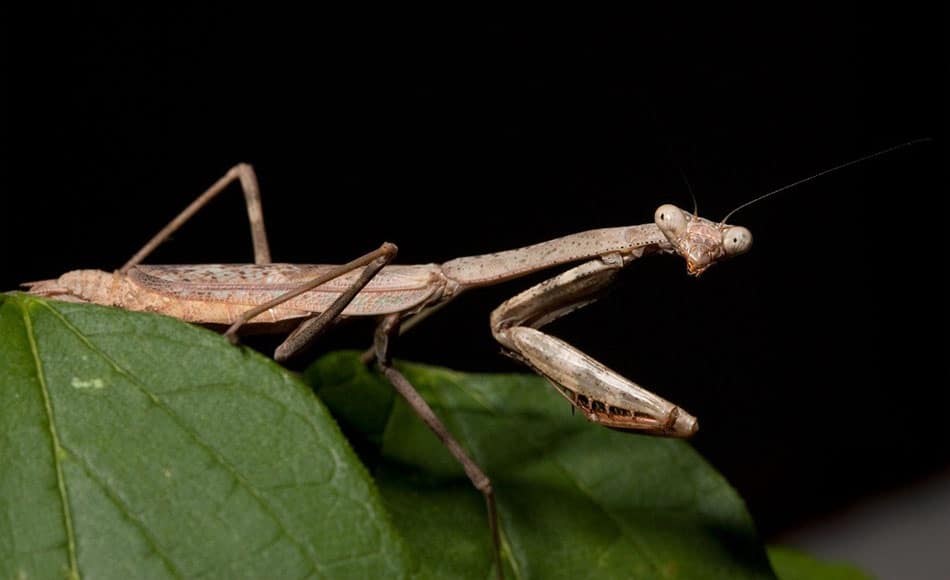Introduction
Praying mantids are fascinating inscets. With a calm nature and entertaining hunting strategies, they really are the perfect insect pet. They are easy to handle, they don’t need much space and there are 2400 different species, each with their own quirky characteristics. These low maintenance pets are great for all ages, including kids.
Setting Up Your Praying Mantis’s Home
Setting up your mantis enclosure is fairly easy. For the container, you need it to be two times as long as the mantis and three times the hieght. For example, if my mantis is 4cm long, the container will have to be at least 8cm wide and 12cm high. However, if you have a larger enclosure avalible, you should use that instead. You also have to make sure that you have to have a container that is big enough for your mantis to move around and moult in, but also small enough so that you can easily find your mantis. Mesh enclosures are often the best option. Make sure that there is ventilation but no holes big enough for your mantis to escape from.
Add in some sticks and leaves for your mantis to climb on. You might like to add in a small plant. Matids need something to hang from when moulting, so make sure to give your pet options. Make sure to spray down your enclosure with a spray bottle when the home becomes dry. Clean out the enclosure at least once a week.
Feeding Your Praying Mantis
Mantids are carnivores and prey on other insects. For small mantises (1-3cm), the ideal food is fruit flie but as your praying mantis gets older, you should introduce larger prey. Make sure to monitor wether your mantis is eating after introducing larger prey. Feed your mantis every 2-3 days or whenever its abdomen becomes flat. After the abdomen swells up, stop offering food until the next feeding round. Avoid prey that can bite or potentially harm your mantis. Feed your antis live prey if possible, although you can feed it freshly killed prey with tweezers.
Moulting
Mantids grow by shedding their hard exoskeleton through a prosses called moulting. When a mantis is coming close to a moult, it will usualy stop eating and start to hang upside-down a lot. To help the mantis have a higher chance of moulting safely, give it twigs to hang from and mist down the enclosure regularly. Most mantids moult at night, but if yours does moult during the day, make sure to leave it alone and not to touch it during or shourtly after moulting unless it is an emergency (for example, the mantis has chosen a spot that is too low and its head is toughing the ground). When it is coing time for the mantis to moult, stop adding food into the enclosure as the other insects could cause injuries to the mantis while moulting. It takes 10-50 minutes for a praying mantis to moult and they do so every 10-15 days. Make sure to track the moults on a calander or in a notebook.
Handling
Praying mantids vary in tempermant, but most are calm creatures who don’t mind to be held. To handle a praying mantis, offer a hand infront of the insect and use your other hand to gently nudge it onto your hand. Mantises are not likely to attack in any way, making them easy to handle. It is safe for both children and adults to handle praying mantises. When handling, try not to pinch any of the mantis’s legs. Some mantids will also alow you to pat the on the thorax. Do not attempt to pick up a mantis on the thorax.
Risks
Mantids are amazing pets, however there are risks involved with caring for these beautiful insects. Moulting is a risky time for mantises and some die if they fail to break through the exoskeleton due to a lack of humidity or strength. This is more common in younger mantises, although it can happen to the older ones as well. They migh also get hurt if they fall during moulting. If you are housing multiple mantises together, it is likely that they will eat one another. Another risk is that they will die of disease or from parasites (like hair worms). Males also can get eaten while mating.

